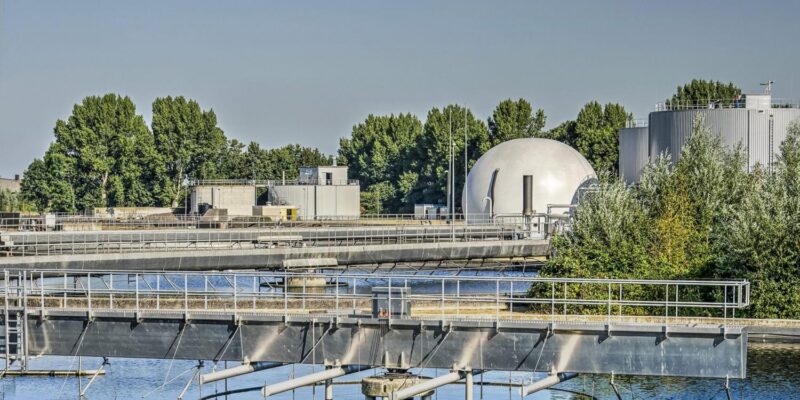Wastewater: the invisible service
COVID-19 has had a major impact on all of us. One such impact is that we have a greater appreciation of the difference that key workers make in our lives. In various countries, we have clapped for (in addition to healthcare staff) supermarket workers, refuse collectors, bus drivers, and utility workers who have worked to keep the water running, the broadband connected and the lights on.
11 water companies in England and Wales provide wastewater disposal in addition to supplying drinking water. However, the contributions of people involved in the wastewater side often go unnoticed. What efforts are involved in providing this ‘invisible’ service, and what have the challenges been during the COVID-19 pandemic? Furthermore, could the wastewater service be a key part of efforts to track the path of the virus—and to predict future outbreaks?
The invisible service
Clearly, it is vitally important that water continues to be supplied to homes for drinking, washing and sanitary purposes. The day-to-day contributions of water companies and their staff can go unnoticed in normal circumstances, but there is another aspect that tends to get overlooked completely. When we flush the toilet, how many of us know what happens next?
Each time we flush the toilet, the wastewater goes through a sewer, where this mixes with storm water run-off from our roofs and roads. In normal conditions, this mixture is channelled to sewage treatment works, whereas in stormy conditions it is temporarily stored to prevent the works from becoming overloaded.1 At the treatment works, grit and debris are removed, followed by a first stage of treatment. This involves separating the heavier sludge from the remaining liquid. The liquid undergoes various treatment stages (filtration, aeration and disinfection) and is then discharged into the rivers and sea as treated effluent.
All of these processes require staff and contractors to keep the processes going. COVID-19 has made this more challenging, and companies have needed to adapt. For example, social distancing has made accessing sites more difficult; resources have been taken up in dealing with the pandemic, as opposed to assisting planned investment projects; and suppliers and contractors themselves have also sought to keep their own workers safe.
The job isn’t made easier when sewers get blocked—for example, by people flushing wet wipes—which can in turn result in peoples’ homes being flooded with sewage. It’s for this reason that the companies have used social media campaigns on this issue during the pandemic. Moreover, water companies have used social media to highlight the efforts of their employees.
Turning back the processes: what about the sludge? Unsurprisingly, it’s rich in organic matter. This often goes through anaerobic digestion (AD), which takes place in vats that look like giant golf balls. Microorganisms are added to the sludge and, in the absence of oxygen, this mixture is heated up. This gradually breaks down the sludge and produces methane, which can be burned to produce electricity or injected into the gas network. The leftover sludge cake is not wasted—it can be used as farm fertiliser. Technology has improved over time, with advanced anaerobic digestion (AAD) such as thermal hydrolysis enabling even more methane yield.
Sludge is therefore not so much a waste product, but rather a valuable resource in the UK’s renewable energy mix. Indeed, wastewater companies are becoming increasingly self-sufficient when it comes to their energy needs—by producing power from a mixture of anaerobic digestion, solar and wind.
While wastewater is an invisible service, there is a relationship here between visibility and company purpose. Before the pandemic, there was discussion of the underlying purpose of water companies beyond providing a basic service in return for profits, and of the various ‘capitals’ that companies should maintain and grow (natural, social, human, financial and manufactured).
A key purpose of the processes described above is to protect social capital by maintaining effective sanitation in the community and preventing sewer flooding. In addition to these societal benefits, another objective is to maintain natural capital by treating effluent to a high standard before releasing it into the environment. AD helps further, protecting natural capital by producing a renewable energy resource and an organic fertiliser. In effect, such activity helps farmers to grow the food we eat under lockdown, as well as helping us to cook it in our homes.
The industry regulator, Ofwat, has acknowledged the public value that water companies provide. It notes that ‘many water companies see the Covid-19 pandemic as an opportunity to make a material and positive contribution to society like never before’. In particular, Ofwat has highlighted the public service ethos of industry workers; the continued provision of services critical for public health; the efforts made to help people struggling to pay their bills; and the support for the contractor community.2
Tracing through innovation
The impacts of the wastewater service go even further than that discussed above—they could complement efforts to defeat the COVID-19 pandemic. In the UK, the governments of the four nations are using various means to track people who become infected with COVID-19 and to trace who they have been in contact with. This has necessitated fast, adaptive innovation via collaboration between government, businesses, universities, communities and individuals.
Part of the solution involves manual reporting and testing. With the NHS ‘Test and Trace’ service, the idea is that anyone who develops symptoms of COVID-19 can quickly be tested to find out if they have the virus. This includes targeted asymptomatic testing of NHS and social care staff and care home residents. Anyone who tests positive then needs to provide details of close recent contacts, who are then, if necessary, notified that they must self-isolate. The initiative is in its infancy and its overall success has yet to be determined.
In addition, digital contact tracing and testing may be deployed in future. Since 5 May, the Isle of Wight has been the testing ground for an app that informs people automatically if they’ve been in close contact with someone who has tested positive for the virus. It works by tracing Bluetooth signals transmitted between people’s smartphones when in close proximity. If the test is successful, the initiative will gradually be deployed at scale across the UK.
The wastewater sector could be a third prong to the effort. Until recently, few people would have heard of ‘wastewater-based epidemiology’ (or WBE). Here, scientists use equipment to detect the presence of COVID-19 in our waste at sewage treatment works. This can help to determine the levels of COVID-19 in the local population (even if it is asymptomatic) and, on this basis, predict where the next hotspots are likely to emerge.
To implement WBE effectively requires learning from best practice. The Netherlands is arguably one of the world leaders; KWR (the Water Research Institute) and RIVM (the National Institute for Public Health and the Environment) have examined samples from wastewater treatment works across the country, and they have shared their research methods internationally.
Research has since taken place in Australia, England, Israel, Scotland, Spain and the USA. England and Spain have very recently been undertaking research through two universities (Newcastle University and the University of Santiago de Compostela) and two corporate sponsors (Northumbrian Water, a water company in North East England, and LABAQUA, a subsidiary of SUEZ, based in Valencia).3
From an economics perspective, WBE could be promising, as it could provide important benefits at a lower cost than track-and-trace testing. WBE helps with local tracing and early prediction; there is no need to test everyone in the population, it is quick to implement and scalable, and it does not rely on compliance with smart technology or on accurate reporting by households. It also may address concerns regarding privacy. Used wisely, it could help determine whether there should be localised lockdowns or lifting of restrictions.
Like with any method, there are downsides. WBE provides only an approximate number of infections in a particular community served by the wastewater treatment works. It also identifies community-level data and not data at an individual level. Therefore, WBE does not replace testing; rather, it should be viewed as complementary.
Looking forward…
Wastewater has been the invisible service. Hopefully, this article will highlight the important job that companies and their employees do for all of us. In addition, the functions of wastewater companies go beyond sanitation. WBE is being researched as you read this article, and it will hopefully bear some fruit in the mix with track and trace. It is not a substitute for testing, but its data may be used to triangulate the results of different methods. This will involve collaboration across various institutions.
Track and trace and WBE will also require collaboration across epidemiologists, data scientists, statisticians and simulation experts. A recent computer simulation found that in addition to COVID-19 concentration, other key variables need to be taken into account to determine local presence and predict the future development of the disease: temperature; in-sewer travel; and per capita consumption.4 As statisticians know only too well, when looking at real-world data, omitting these key control variables can bias the results—something that should be avoided when the stakes are so high.
1 Evidently, things can (and do) go wrong–particularly during storm conditions, when the network becomes overloaded and untreated sewage is spilled into rivers and the sea. Water companies can be fined when this happens, depending on the frequency and severity of the spills. Storm conditions can also lead to sewer flooding in people’s homes, which can lead to compensation being paid, among other measures.
2 Ofwat (2020), ‘Delivering public value through water’, blog by Ofwat CEO Rachel Fletcher, edited 9 April.
3 See: Newcastle University (2020), ‘Sewage monitoring could provide an early warning of COVID-19 outbreaks’, press release, 23 April.
4 Hart, O. and Halden, R. (2020) ‘Computational analysis of SARS-CoV-2/COVID-19 surveillance by wastewater-based epidemiology locally and globally: Feasibility, economy, opportunities and challenges’, Science of The Total Environment, 730, 15 August, article no. 138875.
Download
Related

Time to get real about hydrogen (and the regulatory tools to do so)
It’s ‘time for a reality check’ on the realistic prospects of progress towards the EU’s ambitious hydrogen goals, according to the European Court of Auditors’ (ECA) evaluation of the EU’s renewable hydrogen strategy.1 The same message is echoed in some recent assessments within member states, for example by… Read More

Financing the green transition: can private capital bridge the gap?
The green transition isn’t just about switching from fossil fuels to renewable or zero-carbon sources—it also requires smarter, more efficient use of energy. By harnessing technology, improving energy efficiency, and generating power closer to where it’s consumed, we can cut both costs and carbon emissions. In this episode of Top… Read More

